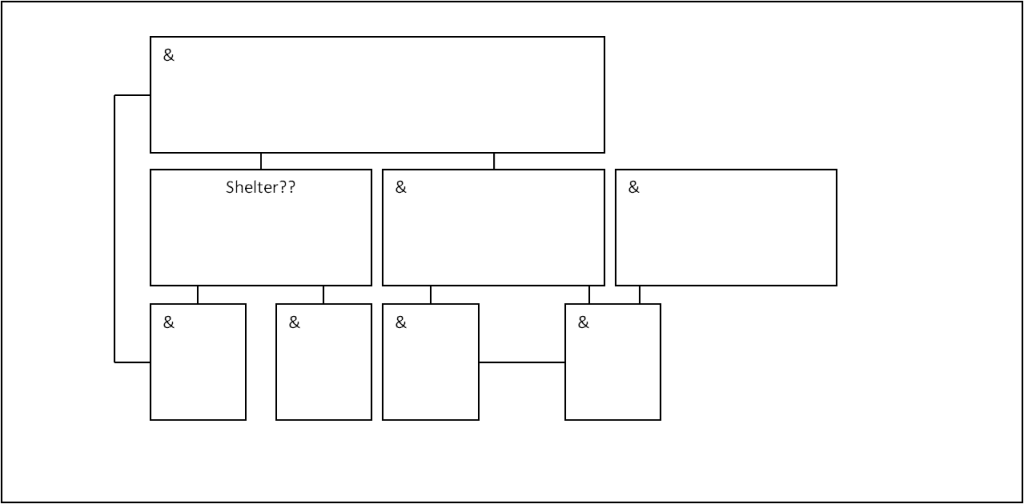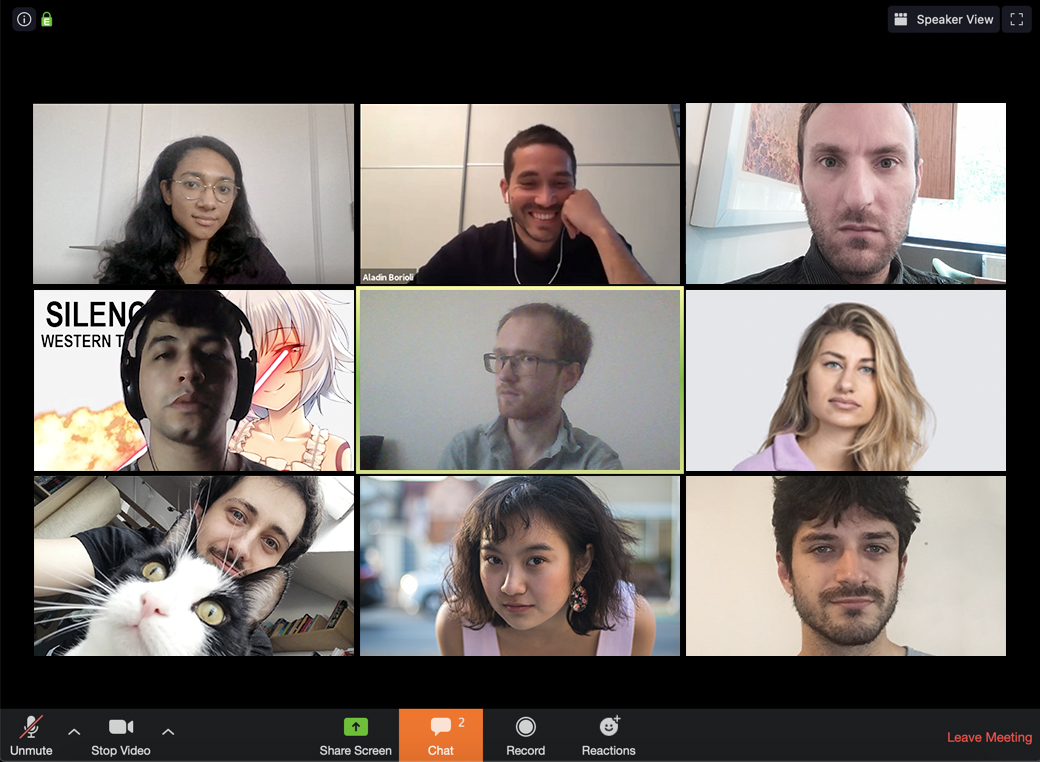Any collective effort is a game of risk with only two outcomes. It is a matter of nothing and of all. Either we construct complex cooperative bonds or cut the same threads and accept the resultant collapse. In facing what could be considered an apparent liminal-historical scenario of our species, we should take issue with the idea that a shelter is a hiding place which has been demanded of us as a response to our part in the invocation of the catastrophic contingency that faces us. A shelter should rather be considered as an opportunity for the communal strategist, or the gambler who places all of his bets on the future hoping that it will let their own story unfold, or the puzzle-solver who will eventually outlive the strategist or gambler as we take stock within the contemporary to orient ourselves toward exiting the very idea of hiding. A shelter is a staging-ground that enables us to develop synergistic technologies of cooperation against the detrimental tyranny of the chosen few who have sunk our Earth across scales of existence and thought, corroding networks of species and ecosystems. To shelter means to initiate a process of reconstruction and readaptation in order to survive. We ask ourselves and you:
& What counts as a shelter today?
& How have we tried to, succeeded and possibly failed to create such places or staging-grounds?
& How can one find shelter and what have we learned about the act of sheltering?
What a shelter is
We have sheltered in many places. But if we do not understand what kind of place a shelter is, even spaceships and nuclear bunkers can provide only dubitable cover against the continuous closure of the field of possibilities that is the contemporary.
A shelter is a new place that protects this field and purports to pry it open in unforeseeable ways. Finding or constructing a new place can be a very discomforting experience that requires thinking about the different levels that the universe can be traversed. That is to say that shelters can be found or built far away from Earth or on Earth, but only at levels that are very rarely inhabited. A shelter is therefore a nest. Finding or constructing a shelter is to participate in a game of approaching sets of nested places that can be very different from one another. A shelter is not so much a home as a temporary abode or improvised circumscription of a place that keeps other places beside itself in check. On other levels, the shelter and its neighbouring places can interpenetrate in unexpected ways. How does imagining a shelter somewhere on a chain of larger and smaller places impact how the shelter can be inhabited and how can a shelter interact with other levels of description; that is, how can its enactment as part of a neighbourhood of places be construed?
Every place is linked to other places according to particular dependencies; technological, social, performative, strategic and above all ontological. It is not that a shelter is only one place in an endless series of places, as if it were one Matryoshka doll nested in its mother while itself harboring an endless number of children. The image of the chain is inaccurate. On the contrary, there can be all kinds of leaps, interstices and feedback loops between one place and another. A constituent place may for instance maintain direct connections with two higher-order places at once, one of which can itself constitute part of a third. Similarly, two different places can act as ‘maps’ of the same ‘territory’ or third place, but in no way does this mean the two maps must be coextensive or interchangeable. For instance, one map can provide certain ‘keys’ that open (and close) ways of interacting with the territory that the second map does not. The other map, in turn, can offer its own unique affordances, placing within reach yet other places that connect to the territory like the branches of a tree in a manner that would have been impossible by utilizing the first map. A shelter is an opportunity to delimit a particular place and to explore the branches that lead from it to other places nearby and far away.

An unspecified shelter considered in relation to some of its neighbouring places.
How a shelter is made and defended
If establishing a shelter sounds difficult, one need only consider the challenges involved in maintaining such a place against an adversarial world. What happens when the territory one has worked to map, delimit and define becomes threatened or an object of dispute? How do we defend against encroachments?
The matter of scale remains pertinent. Framing of scalar, interscalar and transscalar relationships can also be ways of defending our shelters. In every dispute or struggle, each party has a different conception of how various scales interrelate, each perceiving potential shelters in different places. A mining corporation will have a vastly different understanding of what is local and what is global, when compared with the scalar conceptions of an Indigenous group. Despite the incommensurability of perspectives, it is essential that we begin with the particularities of such a dispute and the place that instantiates it, rather than with the terms that constitute it – be they local or global, planetary or galactic. Framing these scalar relationships allows us to build bridges, whether for better or worse.
In a primordial sense, a shelter is a technology that provides protection and defence against the elements. And in using any defensive technology, it is necessary to consider how we are transformed by our tools. If we fashion a shelter using the master’s tools; how will we be impacted? To fashion from a place a shelter implies certain modes of communicating and collectivising – crucially, it also means the exclusion of others.
What Sheltering Places 2 was
How do we build intimacy between and from our shelters? How can we communicate, exchange and compose something together when we cannot even meet in person? Sheltering Places 2 provided a site for sharing knowledge and composing new places together. These places were construed as potential shelters, but nothing was ever given in advance.
While studying grizzly bears, Jake Metcalf coined the notion of intimacy without proximity. Although it is obvious why we need to avoid physical proximity with giant bears that can eat us alive, it is a very different matter when we need to distance ourselves from each other because of something that cannot be seen. Faced with a planetary privation of proximity, we were forced to compose new places for building intimacy with tools that were and are becoming worryingly intimate themselves.
Sheltering Places 2 may have ended, but the game of constructing shelters has not been forfeited and it remains as saturated with risk as it ever was. Still, we made some moves in this game and that is to our credit. To the extent that Sheltering Places 2 was about facilitating the creation of new shelters and providing tools for composing alternative worlds on altogether untold scales, it may have succeeded. All we wanted to say is that when it is liberated from being encompassed by an idea of hiding and escape, a shelter and the places it connects to can be seen as so many refugia. By refugia we mean the plural of refugium in the biological sense: a location that offers a potential springboard for endangered species and, as it turns out, for love.
